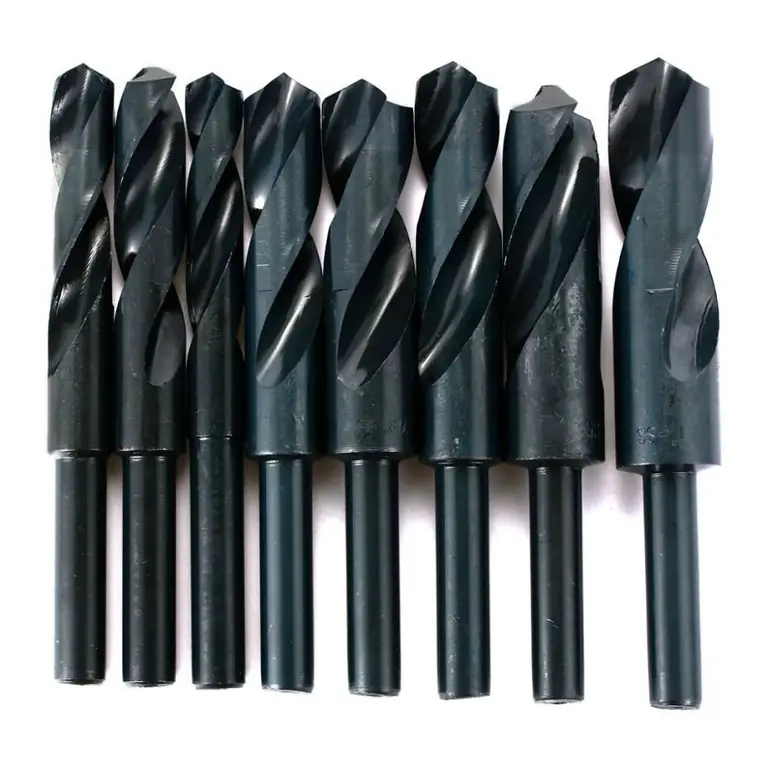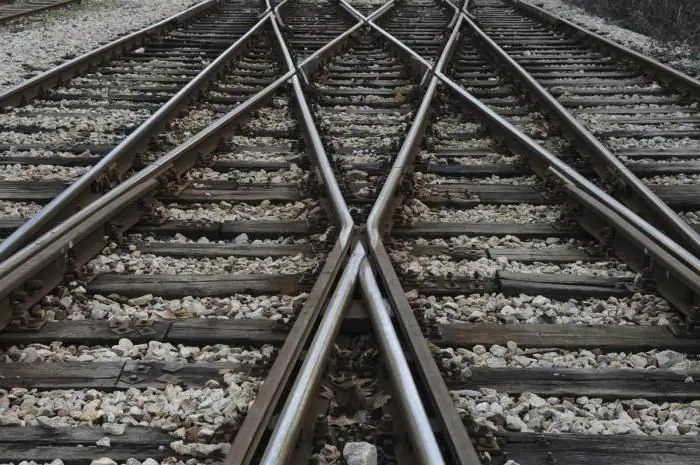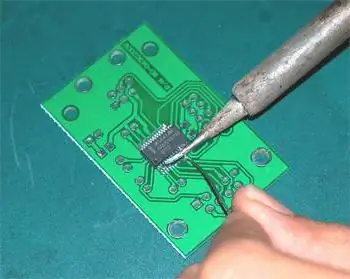2025 Author: Howard Calhoun | [email protected]. Last modified: 2025-01-24 13:10:37
The raw material that is obtained from the processing of a material such as cast iron is called steel. For processing, several different methods can be used - open-hearth, metal-converter and electrothermal. This thermal process is necessary in order for the raw material to pass through the stages of carbon saturation, deoxidation, and others. The composition of any steel must comply with GOST.
General description of material
St3sp steel is intended for the manufacture of shaped, sectional, thin-sheet or thick-sheet material. In addition, it is successfully used in the preparation of cold-rolled and broad-strip thin-sheet products. From this substance it is also possible to produce pipes with a rectangular section and ordinary ones, tapes, hardware, stampings.
It is very important to note here that St3sp steel is the same St3 material, the letters "sp" indicate only the method of its preparation, but more on that later. At present, this substance has become indispensable in the construction of ground and underground communications, in the construction of transport, as well as various other units and machines.

Impurities and deoxidation method
As impurities for the production of St3sp steel are usedthe following substances:
- chromium in the amount of 0.3%;
- nickel in quantity 0.3%;
- copper in the same amount as the first two components;
- sulfur content should not exceed 0.005%;
- phosphorus in an amount not exceeding 0.04%;
- nitrogen is not more than 0, 1%.
Next is the process of steel deoxidation, which is one of the most important. During this operation, all oxygen is removed from the substance, and further qualities will deteriorate depending on which substance was used. Depending on the course of the process, there are three types:
- Quiet steel - manganese, silicon, aluminum are used as impurities for deoxidation.
- Boiling - only manganese is used.
- Semi-calm - manganese and aluminum are used.

Thus, it becomes clear that the decoding of steel St3sp is a calm steel. By this, the manufacturer indicates the degree of deoxidation of the substance.
Description and application of St3sp
This type of substance is the most expensive of all three types. Oxygen is completely absent in it, the structure is homogeneous, that is, completely homogeneous. This property significantly enhances the resistance of the material to the effects of external aggressive environments. In other words, there is a high resistance to corrosion, increased ductility. According to GOST, St3sp steel is used in the production of rigid trusses, as well as other metal structures, load-bearing and non-bearing parts of objects. This raw material can be used to makethe following items:
- sheet and packaged products (steel sheets marked St3);
- rebar blanks and components for the piping system (square pipes St3);
- successfully used in the manufacture of primary and secondary parts for the railway industry, overhead and overhead tracks, etc.

Welding material
This material lends itself quite well to such influences as welding. A wide range of technical parameters, which can also be modified with various additives, are considered universal. Excellent weldability is one of the first advantages that steel has.
Properties and parameters of raw materials allow the use of arc welding types of automatic and manual type. In addition, it is allowed to use the contact-point and electroslag methods. It is also worth noting that this material can be successfully used for the production of forged items.

Full brand decoding
If you rely on GOST, then be sure to use the steel grade St3sp in full. A designation such as St3 is not permitted. According to the international standard, there is a clear division into markings St3sp, St3ps, St3kp. Depending on the modification and increase in manganese content during deoxidation, St3gps and St3gsp grades may also occur. It is also worth paying attention to the fact that if no index was added by the manufacturer during the installation of the marking, then the degreedeoxidation can be installed by the buyer. If an order is placed for this raw material, then in the form it is necessary to write something like this - "steel St3sp GOST 380-2005".
These indices are decrypted as follows:
- St is a designation for the normal quality of carbon steel.
- 3 is a conditional number that is assigned to any steel grade. There are seven such rooms in total. A change in number means a change in the chemical composition of the raw material.
- Sometimes you can find an additional letter G. It is put only if the percentage of the chemical - manganese - exceeds 0.8% of the total mass fraction of substances.
- Sp is the degree of deoxidation of the composition.

The full decoding of St3sp steel looks exactly like this.
Technological qualities
This steel is not prone to temper brittleness. Non-flake sensitivity is also observed, and weldability is practically unlimited. Further, it is important to note that all structural material is divided into groups depending on corrosion resistance, quality of mechanical properties and degree of weldability. If we talk about mechanical characteristics, then rolled steel is divided into three groups - ordinary, increased and high strength.
The basic properties of raw materials depend on their chemical constituents. Ferrite is the main structural material. By itself, this material is considered low-strength, but ductile. Such properties of the base substance do not allowuse ferrite in its pure form, since its use, for example, for building structures is prohibited. It is in order to improve the strength characteristics that the composition undergoes a process of carbon saturation. Steels of the ordinary group are low-carbon materials, the middle group includes substances that are alloyed with such chemical additives as chromium, nickel, silicon, manganese. High-strength substances are additionally alloyed using thermal hardening.

Harmful impurities for steel
During the process of rolled steel, some harmful impurities are used or released, which include phosphorus and sulfur. When phosphorus reacts with ferrite, it greatly increases its brittleness when exposed to low temperatures, or significantly reduces its strength at high temperatures. An excess of sulfur in steel is called sulfur content. This defect leads to red brittleness of the material. The sulfur content in raw materials should not exceed 0.05%, and phosphorus - 0.04%. It is also worth noting here that if the temperature is not high enough for the formation of ferrite, carbon will begin to be released. Its clusters will accumulate between grains, as well as near defects in the crystal lattice. This has a very negative effect on the strip steel St3sp.
Recommended:
CVG steel: composition, application and characteristics

Studying metallurgy and all its subtleties, you involuntarily begin to experience an irresistible desire to get as much useful information as possible and spend as little time and effort as possible on it. In such a case, this article exists. It contains all the most important information related to CVG steel: deciphering the marking, studying the composition, the use of this alloy, as well as a brief excursion into substitute steels and foreign analogues. Everything you need in one place for everyone's convenience
Food stainless steel: GOST. How to identify food grade stainless steel? What is the difference between food stainless steel and technical stainless steel?

The article talks about grades of food grade stainless steel. Read how to distinguish food stainless steel from technical
Hadfield steel characteristics: composition, application

The metallurgical industry is one of the most important components of the GDP of every country, and it also produces unique and useful materials. Mankind could not do without the products produced by metallurgical plants. Steel is one of them. There are different types of this material, which are used in many industries. A steel that has high ductility and wear rate, also known as Hadfield steel, is a unique alloy
Steel: composition, properties, types and applications. Composition of stainless steel

Today, steel is used in the vast majority of industries. However, not everyone knows that the composition of steel, its properties, types and applications are very different from the production process of this product
Solder for soldering copper, aluminum, brass, steel, stainless steel. Solder composition for soldering. Types of solders for soldering

When it is necessary to securely fasten various solid joints together, soldering is most often chosen for this. This process is widespread in many industries. We have to solder and home craftsmen

